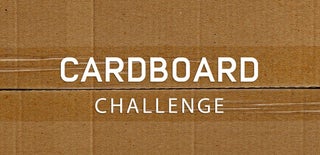Introduction: Mandala Wall Art
About a month ago my son was drawing and I inquired as to what it was. "Its a Mandala, its art meaning the whole world, like the roundness of the world." It was a cool drawing and I was impressed at one thing he had learned at his after school provider (it was a good enough answer for me). This conversation was the inspiration of our family Mandala project.
Step 1: Mandala Design Planning
I began this project by sitting down with my son and explaining that I wanted to use some of the equipment I have at work to make a cool family art piece inspired by him teaching me about a Mandala. I had him start to draw one while the rest of the family went to the web to look for some more inspiration.
As with any family we had many opinions and must make some compromises for the project:
MOM: wanted to see mostly flower and organic/nature shapes.
SON: preferred his drawing, but liked geometric shapes and had a idea about making the whole thing a maze.
DAD: I wanted to incorporate The Golden Ratio.
Step 2: Transferring Ideas to CAD
My son and I sat down and started by recreating his drawing in layers. Once we were satisfied by with the center of the Mandala he went to bed and I worked on a few more elements. I drew up some curvy organic shapes for the wife. Then I started playing with all the geometric shapes I was excited about. I enjoyed recreating the Golden Ratio, and creating a 3D effect with a cube shape. All the campaigning for the whole Mandala to be a maze inspired me to incorporate it to the triangle shapes near the edge.
Over all the best part of this step was teaching my son about using CAD.
Step 3: Cutting the Corrugated
At my work we have a Kongsberg and just got a AXYZ CNC. Without these machines I would not have been able to make this project. I used mostly B and C flute corrugated, but also threw in a 1" piece of honeycomb.
Step 4: Punching Out Shapes, Exposing Corrugated & Honeycomb
In the design there was a lot of intricate pieces to cut and punch out. In the images there is a quick look at the maze.
To add more interest to some of the pieces of the Mandala we removed the top layer of paper from the corrugated to expose the structural patterns.
Step 5: Gluing/stacking the Pieces
We used a standard white Elmer's type glue all. It was fairly easy to do this step other then some pieces were very delicate or oddly shaped. I did glue down a couple layers before I had removed all the top on the Honeycomb and that was a mistake that required tweezers and patience to fix.
Step 6: Creating Flower Pistil
I used a tapered strip of E flute Corrugated to make a coil. The strip started at 3/4 of an inch and went down to 1/4, it also had an inch of flat in the beginning to give the pistil a nice domed shape that fit perfectly into the cutout on the white flower.
Step 7: The Final Product
I am so pleased how this project turned out and had so much fun doing my first instructables. The 3 colors of corrugated look great together. Now to find a place to hang it

Participated in the
Cardboard Challenge










